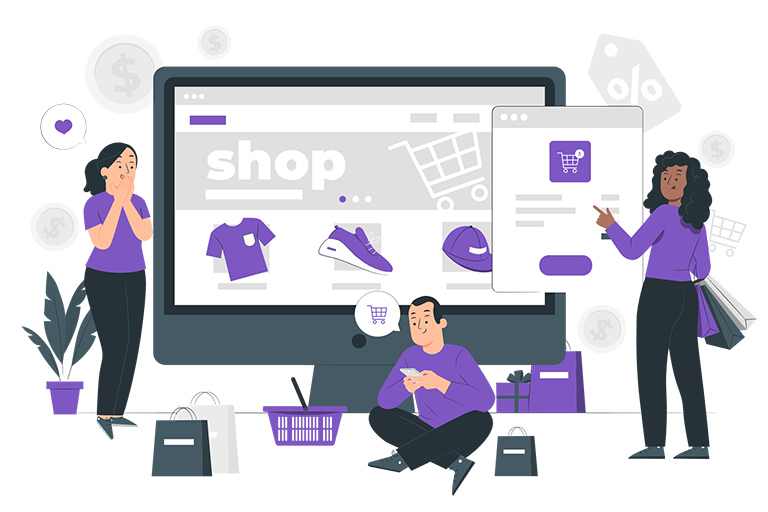The Biggest Trends Shaping African E-Commerce In 2024
While many African e-commerce markets are in their early stages, demographic trends show online retail on the continent is ripe for expansion. From showrooming to promo FOMO, here are the must-know 2024 e-commerce trends in Africa.
The African e-commerce market is gearing up for significant, sustained growth. Small businesses can take advantage – and open up new markets and opportunities – by leveraging trends specific to the African online space.
Underpinning Africa’s excellent commerce potential is a rapid growth in connectivity. There are likely to be 438 million mobile broadband users in Africa by 2030, which means greater access to digital payments and the benefits of e-commerce. McKinsey also predicts online spending in Africa may reach $75 billion by 2025, as digital payments spread through developing economies.
Retail businesses need to stay up to date with e-commerce developments to unlock the benefits of this predicted growth. Take a look at the major trends set to shape the African e-commerce market in 2024:
Every market has its preferred e-commerce channels and payment methods, and Africa is no different. It pays to embrace cashless networks like Mpesa and mobile money services like Telkom Pay and MoMo, which have already earned the trust of customers through their ease and efficiency.
Underpinning Africa’s excellent commerce potential is a rapid growth in connectivity. There are likely to be 438 million mobile broadband users in Africa by 2030, which means greater access to digital payments and the benefits of e-commerce. McKinsey also predicts online spending in Africa may reach $75 billion by 2025, as digital payments spread through developing economies.
Retail businesses need to stay up to date with e-commerce developments to unlock the benefits of this predicted growth. Take a look at the major trends set to shape the African e-commerce market in 2024:
1. Localized payment approaches
Every market has its preferred e-commerce channels and payment methods, and Africa is no different. It pays to embrace cashless networks like Mpesa and mobile money services like Telkom Pay and MoMo, which have already earned the trust of customers through their ease and efficiency.

Another growing trend in emerging markets is social commerce, via platforms like Instagram, Facebook and TikTok. This means more opportunities to build localized e-commerce strategies that take advantage of content creation trends as they emerge. Platforms with in-feed shopping functionality such as Instagram Shopping offer easy access to a highly engaged active social media audience.
RELATED: Are you making these e-commerce fulfillment mistakes?
Price remains critical when it comes to retail choices. In a tough global economy, signs are starting to emerge that even brand loyalty is under pressure. Buyers are looking for better quality at competitive prices.
Customers are searching for deals, so online retailers must find ways to add value and enhance the affordability of their products. Offer discounts linked to buying in bulk, early-bird purchases, or cross-selling with related products. Adjust your prices as demand shifts or offer cut-price deals to encourage sampling.
While the African e-commerce sector has seen steady, consistent growth over the past decade, what distinguishes Africa is how fast the continent is embracing mobile connectivity.
The International Trade Association reports that Africa’s mobile internet usage is 13% above the global average. E-tailers should prioritize apps and mobile-friendly algorithms that make it easier to buy and sell on mobile. When users find a product that interests them, they want to make a purchase quickly and seamlessly using just their mobile.
Many cost-conscious customers are obsessed with finding promotions and trying to avoid missing out on special offers. Retailers can embrace this trend by creating exclusive, short-term deals only available on specific days, or for a limited period. Consider building countdowns into online and social media campaigns, such as“This offer expires in 6 hours!” or “For the next hour only!”
Encourage customers to earn discounts through additional spending, such as “Spend more and get free shipping!” Make users feel they will miss a great opportunity if they don’t act promptly.
RELATED: Last mile delivery: definitions, challenges and opportunities
While e-commerce continues growing, customers still feel the attraction of physical, brick-and-mortar stores. Some direct-to-consumer e-commerce stores are now even expanding into the physical world, opening stores at malls and shopping centers.
Another trend is showrooming, where customers get to experience products to purchase them online later. In South Africa, physical and online stores are also forming partnerships that combine real-world and virtual shopping.
RELATED: Are you making these e-commerce fulfillment mistakes?
2. Price innovation
Price remains critical when it comes to retail choices. In a tough global economy, signs are starting to emerge that even brand loyalty is under pressure. Buyers are looking for better quality at competitive prices.
Customers are searching for deals, so online retailers must find ways to add value and enhance the affordability of their products. Offer discounts linked to buying in bulk, early-bird purchases, or cross-selling with related products. Adjust your prices as demand shifts or offer cut-price deals to encourage sampling.
3. Mobile e-commerce growth
While the African e-commerce sector has seen steady, consistent growth over the past decade, what distinguishes Africa is how fast the continent is embracing mobile connectivity.
The International Trade Association reports that Africa’s mobile internet usage is 13% above the global average. E-tailers should prioritize apps and mobile-friendly algorithms that make it easier to buy and sell on mobile. When users find a product that interests them, they want to make a purchase quickly and seamlessly using just their mobile.
4. ‘Promo FOMO’
Many cost-conscious customers are obsessed with finding promotions and trying to avoid missing out on special offers. Retailers can embrace this trend by creating exclusive, short-term deals only available on specific days, or for a limited period. Consider building countdowns into online and social media campaigns, such as“This offer expires in 6 hours!” or “For the next hour only!”
Encourage customers to earn discounts through additional spending, such as “Spend more and get free shipping!” Make users feel they will miss a great opportunity if they don’t act promptly.
RELATED: Last mile delivery: definitions, challenges and opportunities
5. The omnichannel approach
While e-commerce continues growing, customers still feel the attraction of physical, brick-and-mortar stores. Some direct-to-consumer e-commerce stores are now even expanding into the physical world, opening stores at malls and shopping centers.
Another trend is showrooming, where customers get to experience products to purchase them online later. In South Africa, physical and online stores are also forming partnerships that combine real-world and virtual shopping.

To take advantage of this retail trend, retailers could look for ways to expand their presence. Build relationships with other online stores, as well as real-world retailers, where customers can experience your products, and buy online later.
Customers want to know they can get their orders as quickly as possible. If they can’t, they’ll shop elsewhere. In the European and US markets, customers expect overnight shipment for international orders. This is likely to become a trend in Africa too.
To meet demand, partner with effective logistics providers to ensure quick, safe, and effective delivery at any time. Need more tips on e-commerce in Africa? Visit our e-commerce center here.
6. Rapid, flexible shipping options
Customers want to know they can get their orders as quickly as possible. If they can’t, they’ll shop elsewhere. In the European and US markets, customers expect overnight shipment for international orders. This is likely to become a trend in Africa too.
To meet demand, partner with effective logistics providers to ensure quick, safe, and effective delivery at any time. Need more tips on e-commerce in Africa? Visit our e-commerce center here.
***



















 The Latest
The Latest